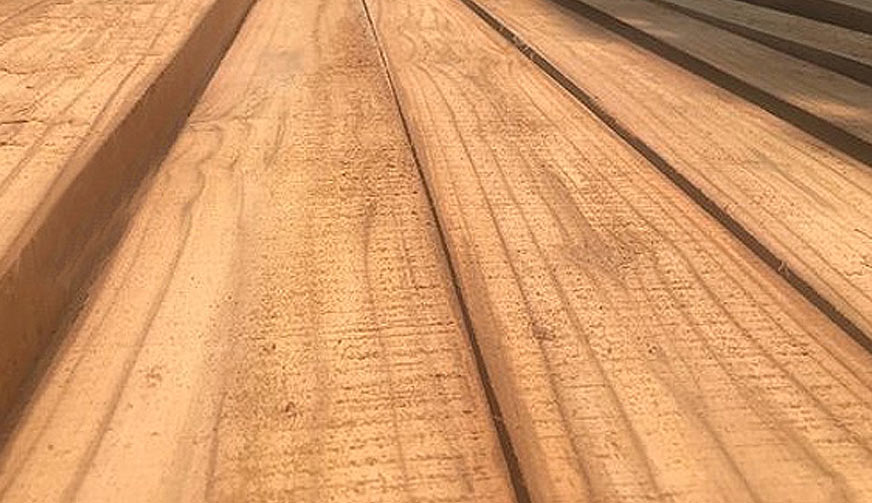Contact Info
Special Ghana -Timber Species

Special Ghana
Teak is a large deciduous tree up to 40 m (131 ft) tall with grey to greyish-brown branches, known for its high quality wood. Its leaves are ovate-elliptic to ovate, 15–45 cm (5.9–17.7 in) long by 8–23 cm (3.1–9.1 in) wide, and are held on robust petioles which are 2–4 cm (0.8–1.6 in) long. Leaf margins are entire.
Fragrant white flowers are borne on 25–40 cm (10–16 in) long by 30 cm (12 in) wide panicles from June to August. The corolla tube is 2.5–3 mm long with 2 mm wide obtuse lobes. Tectona grandis sets fruit from September to December; fruits are globose and 1.2-1.8 cm in diameter. Flowers are weakly protandrous in that the anthers precede the stigma in maturity and pollen is shed within a few hours of the flower opening. The flowers are primarily entomophilous (insect pollinated), but can occasionally be anemophilous (wind pollinated).[8] A 1996 study found that in its native range in Thailand, the major pollinator were species in the bee genus Ceratina.
Wood
- Heartwood is yellowish. It darkens as it ages. Sometimes there are dark patches on it. There is a leather-like scent in newly cut wood.
- Sapwood is whitish to pale yellowish brown. It can easily separate from heartwood.[citation needed]
- Wood texture is hard and ring porous.
- Density varies according to moisture content: at 15% moisture content it is 660 kg/m3.
Uses
Teak's high oil content, high tensile strength and tight grain make it particularly suitable where weather resistance is desired. It is used in the manufacture of outdoor furniture and boat decks. It is also used for cutting boards, indoor flooring, countertops and as a veneer for indoor finishings. Although easily worked, it can cause severe blunting on edged tools because of the presence of silica in the wood. Over time teak can weather to a silvery-grey finish, especially when exposed to sunlight.
Teak is used extensively in India to make doors and window frames, furniture, and columns and beams in old type houses. It is resistant to termite attacks and damage caused by other insects. Mature teak fetches a very good price. It is grown extensively by forest departments of different states in forest areas.
Leaves of the teak wood tree are used in making Pellakai gatti (jackfruit dumpling), where batter is poured into a teak leaf and is steamed.[24] This type of usage is found in the coastal district of Udupi in the Tulunadu region in South India. The leaves are also used in gudeg, a dish of young jackfruit made in Central Java, Indonesia, and give the dish its dark brown colour.
Teak is used as a food plant by the larvae of moths of the genus Endoclita including E. aroura, E. chalybeatus, E. damor, E. gmelina, E. malabaricus, E. sericeus and E. signifer and other Lepidoptera including the turnip moth.


